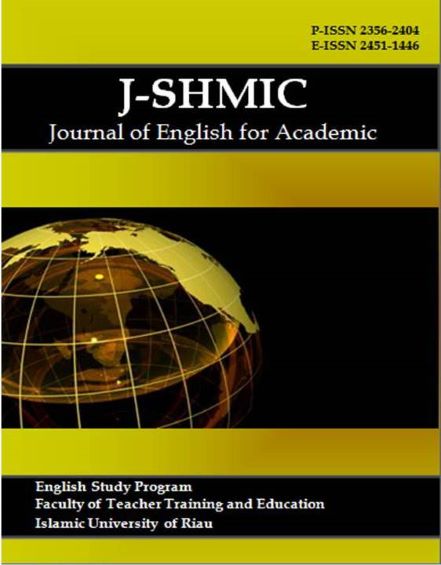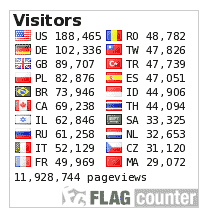Exploring University Students’ Willingness to Communicate and Unwillingness to Communicate in EFL
Keywords:
WTC; Un-WTC; EFL; Speaking; Qualitative ResearchAbstract
This research investigates the contributive factors influencing students’ willingness to communicate (WTC) dan unwillingness to communicate (Un-WTC) in English as a foreign language in higher education in Indonesia. 10 first-year students which came from several non-English departments participated in the study and they represented the WTC and Un-WTC groups. Semi-structured observations and interviews were used to collect the data. The result reveals that there were two main factors contributing to their WTC and Un-WTC, namely individual dan external factors. The ideal L2 self, confidence, anxiety, and perceived communicative competence are among the individual factors, while teacher’s personality, types of activities and topics, classroom atmosphere subsumes to the external factors. These factors are interconnected and affect students’ WTC and Un-WTC in the classroom.
Downloads
References
Asmalı, M. (2016). Willingness to Communicate of Foreign Language Learners in Turkish Context. Procedia - Social and Behavioral Sciences, 232(April), 188–195.
https://doi.org/10.1016/j.sbspro.2016.10.044
Cao, Y. (2011). Investigating situational willingness to communicate within second language classrooms from an ecological perspective. System, 39(4), 468–479. https://doi.org/10.1016/j.system.2011.10.016
Chan, L. (2016). The Dynamic Interplay of hte Ideal Self, Mental Imagenery and Context: A Language Learner’s Journey of Success. In J. King (Ed.), The Dynamic Interplay Between Context and the Language Learner. Palgrave Macmillan.
Elahi Shirvan, M., Khajavy, G. H., MacIntyre, P. D., & Taherian, T. (2019). A Meta-analysis of L2 Willingness to Communicate and Its Three High-Evidence Correlates. Journal of Psycholinguistic Research, 48(6), 1241–1267. https://doi.org/10.1007/s10936-019-09656-9
Fadilah, E. (2018). Willingness to Communicate from Indonesian Learners’ Perspective: A Dynamic Complex System Theory. Journal of ELT Research, 3(2), 168–185. https://doi.org/10.22236/JER
Gałajda, D. (2017). Communicative Behaviour of a Language Learner. In Communicative Behaviour of a Language Learner. http://link.springer.com/10.1007/978-3-319-59333-3
Ghani, M., & Azhar, S. W. (2017). Effect of Motivation, Willingness to Communicate (WTC), Self Perceived Communicative Competence (SPCC) and L2 Anxiety on the Frequency of Use of English as L2. The Journal of Educational Research, 20(1), 157.
Havwini, T. (2019). Indonesian EFL students’ willingness to communicate in the 2013 curriculum implementation: A case study. Teflin Journal, 30(1), 105–120. https://doi.org/10.15639/teflinjournal.v30i1/105-120
Lin, Y. T. (2019). Taiwanese EFL Learners’ Willingness to Communicate in English in the Classroom: Impacts of Personality, Affect, Motivation, and Communication Confidence. Asia-Pacific Education Researcher, 28(2), 101–113. https://doi.org/10.1007/s40299-018-0417-y
Macintyre, P. D., Dornyei, Z., Clément, R., & Noels, K. A. (1998). Conceptualizing willingness to communicate in a L2: A situational model of L2 confidence and affiliation. Modern Language Journal, 82(4), 545–562. https://doi.org/10.1111/j.1540-4781.1998.tb05543.x
MacIntyre, P. D., & Doucette, J. (2010). Willingness to communicate and action control. System, 38(2), 161–171. https://doi.org/10.1016/j.system.2009.12.013
MacIntyre, P. D., & Wang, L. (2021). Willingness to communicate in the L2 about meaningful photos: Application of the pyramid model of WTC. Language Teaching Research, 25(6), 878–898. https://doi.org/10.1177/13621688211004645
Mystkowska-Wiertelak, A. (2018). Fluctuations in willingness to communicate during a semester: a case study. Language Learning Journal, 49(1), 1–12. https://doi.org/10.1080/09571736.2018.1469660
Peng, J.-E. (2016). The Context-Sensitivity of Self-Concept and WTC in the Chinese EFL Classroom. In J. King (Ed.), The Dynamic Interplay Between Context and the Language Learner (pp. 84–103). Palgrave Macmillan.
Riasati, M. J., & Rahimi, F. (2018). Situational and individual factors engendering willingness to speak English in foreign language classrooms. Cogent Education, 5(1), 1–15. https://doi.org/10.1080/2331186X.2018.1513313
Sesriyani, L. (2020). The Indonesian Students' Willingness to Communicate in Virtual Class: A Case Study. Getsempena English Education Journal, 7(2), 214–227. https://doi.org/10.46244/geej.v7i2.1191
Shen, S., Mazgutova, D., & McCray, G. (2020). Exploring Classroom Willingness to Communicate: The Role of Motivating Future L2 Selves. International Journal of Educational Methodology, 6(4), 729–743. https://doi.org/10.12973/ijem.6.4.729
Subekti, A. S. (2019). Willingness to Communicate in English of Non-English Major University Students in Indonesia. Lingua Cultura, 13(1), 55. https://doi.org/10.21512/lc.v13i1.5155
Weda, S., Atmowardoyo, H., Rahman, F., Said, M. M., & Sakti, A. E. F. (2021). Factors affecting students’ willingness to communicate in EFL classroom at higher institution in indonesia. International Journal of Instruction, 14(2), 719–734. https://doi.org/10.29333/iji.2021.14240a
Yashima, T. (2020). Motivation and WTC. In L. Martin (Ed.), Motivation and Individual Differences (pp. 203–224).
Zein, S., Sukyadi, D., Hamied, F. A., & Lengkanawati, N. S. (2020). English language education in Indonesia: A review of research (2011-2019). Language Teaching, 53(4), 491–523. https://doi.org/10.1017/S0261444820000208
Published
How to Cite
Issue
Section
This is an open-access article distributed under the terms of the Creative Commons Attribution-ShareAlike 4.0 International License which permits unrestricted use, distribution, and reproduction in any medium. Users are allowed to read, download, copy, distribute, search, or link to full-text articles in this journal without asking by giving appropriate credit, providing a link to the license, and indicating if changes were made. All of the remixes, transform, or build upon the material must distribute the contributions under the same license as the original.











